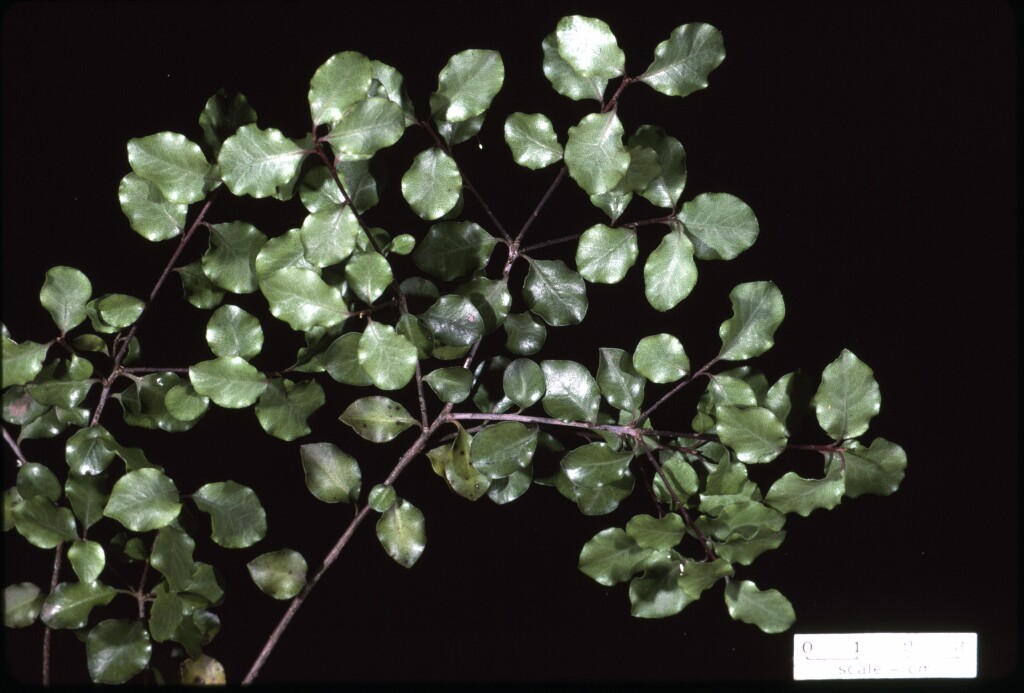Pittosporum tenuifolium
Sol. ex Gaertn.Shrub or small tree to c. 8 m high. Leaves alternate, oblong to ovate, 3–6 cm long, 2–4 cm wide, glossy, mid to dark green above, lighter below, minutely pubescent when young, margins usually undulate. Flowers scented, bisexual, solitary in axils or in small axillary cymes; pedicles 2–3 mm long; sepals free, narrowly ovate to lanceolate, 5–7 mm long; petals oblong-elliptic to oblong-obovate, c. 12 mm long, deep maroon to almost black, spreading from c. mid-way. Capsule subglobose, c. 12 mm long, dark brown or black when mature, glabrous, inner face shallowly grooved, bright yellow; seeds numerous, 4–5 mm long, blackish.
VVP, GipP, OtP, CVU, EGU, HSF, HNF, OtR, Strz. Also SA, NSW, Tas. Native to New Zealand. A popular garden species with numerous cultivars (often with variegated or purplish leaves), occasionally escaping from cultivation.
This species is readily distinguished by its maroon flowers that are solitary in the axils or in small axillary cymes. The cultivar P. tenuifolium ‘James Stirling’ has leaves considerably smaller than typical (usually c. 2 cm long). It is widely planted as a fast-growing, lightly screening hedge. See Spencer (2002a) for a detailed list of cultivars.
 Spinning
Spinning


